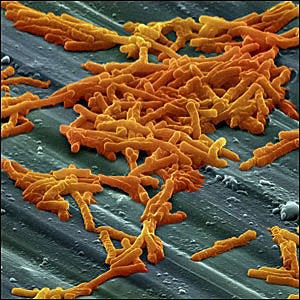Picking a NY hospital? Check our hospital-acquired infection database before you do
Before picking a hospital, New Yorkers should check out how well the facility performed in limiting hospital-acquired infections, health officials said.
The stakes are clear as these infections are significant causes of health complications and deaths, affecting about 3% of hospital patients on any given day, state records show.
More than 225,000 patients acquired serious infections at New York hospitals from 2008 through 2019, the most recent statewide data show. And early reporting suggests those infection rates spiked in New York and across the country during the pandemic.
How to use our searchable hospital infections database

You can access our searchable hospital-acquired infection rates database here: data.democratandchronicle.com/new-york-hospital-acquired-infections/.
Type in the name of your local hospital in the search bar to bring up data available from 2008 to 2019 on that medical facility's rates of specific infections, including:
CDI, or Clostridium difficile (C. diff) infections that began in the hospital
SSI, or surgical site infections associated with hip surgeries
CLASBI, or central line-associated blood stream infections.
Clicking on a specific hospital will bring up more detailed data, including a breakdown of infections and infection rates by year, as well as how it compares to state averages.
Candida auris cases in NY Where are the fungus cases in New York? What we know (and don't)
What to know about hospital-acquired infections in NY
In 2005, lawmakers and then-Gov. George Pataki approved a state law requiring hospitals in New York to report select hospital-acquired infections to the state Department of Health.
The infections targeted have changed at times, but the 2019 selection included infections for:
Colon surgery, hip replacement, coronary artery bypass graft surgery, abdominal hysterectomy surgery, spinal fusion surgery, and central line-associated bloodstream infections. The list also included Clostridium difficile (C. diff) and carbapenem-resistant Enterobacteriaceae.
To understand the stakes, consider C. diff alone causes almost half a million infections in the United States each year. And one in 11 people over age 65 diagnosed with a healthcare-associated case will die within one month, CDC says.
'Ghost' networks Mental health patients searching for NY providers find mostly 'ghost' networks, AG finds
How to read hospital-acquired infection data in NY
One of the keys to using hospital-quired infection data is to look at how each facility stacks up to the state average.
For example, a total of 78 different hospital wards reported rates of at least one infectious disease spreading at rates significantly higher than the statewide average in 2019, data show. Some of these hospitals also reported significantly above-average infection rates for several illnesses.
Health care: NY hospital safety ranking among worst nationally. Check your local hospital's grade
These results are important, in part, because the method accounts for differences in the patient population. In other words, the comparison is transparent and fair.
Once armed with this data, consumers seeking further comparisons should review various government and independent safety ratings, some of which include analysis of infection-control measures at hospitals.
At the same time, consumers should also keep an eye out for updates to the database on the USA TODAY Network for the latest hospital-acquired infection data for New York.
This article originally appeared on Rockland/Westchester Journal News: Picking a NY hospital? Check our hospital-acquired infection database
